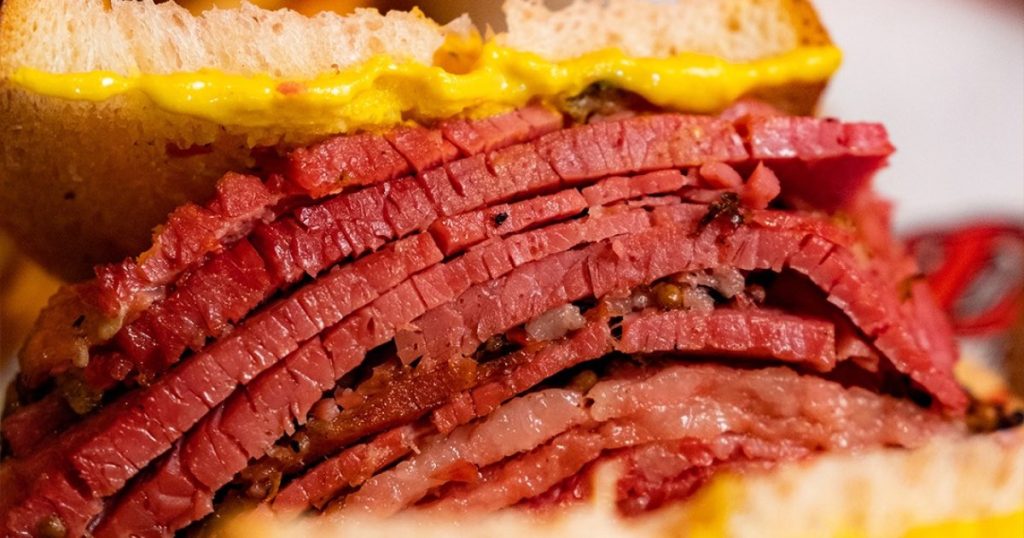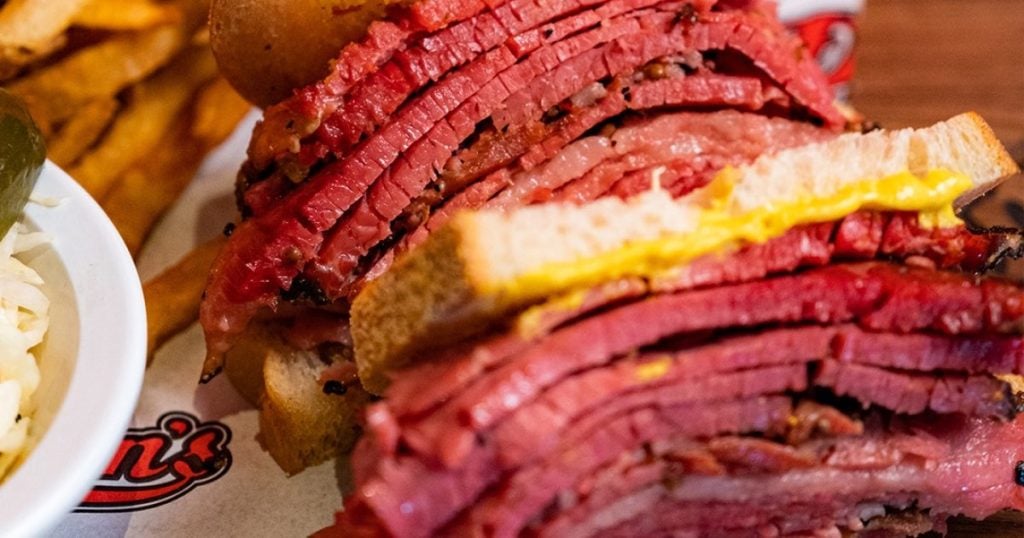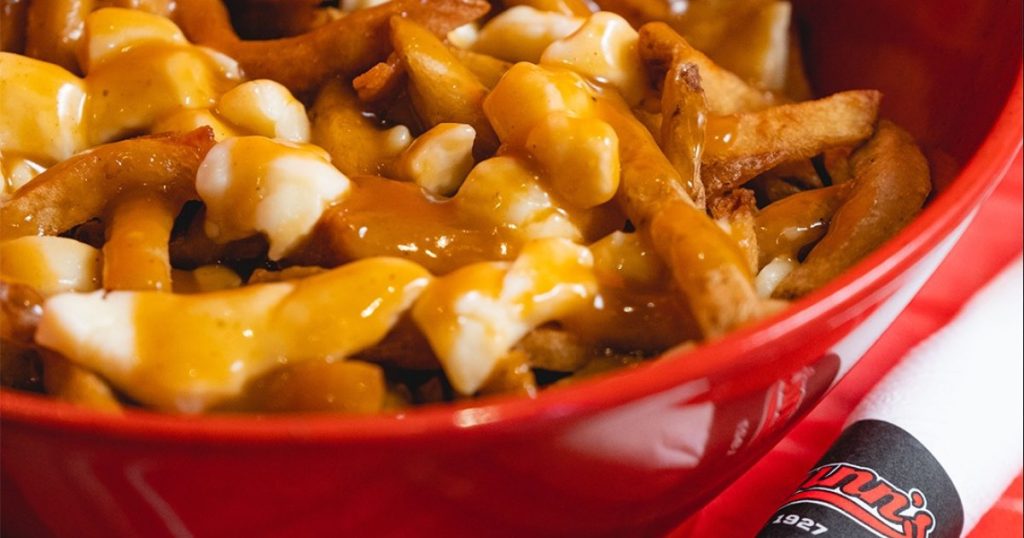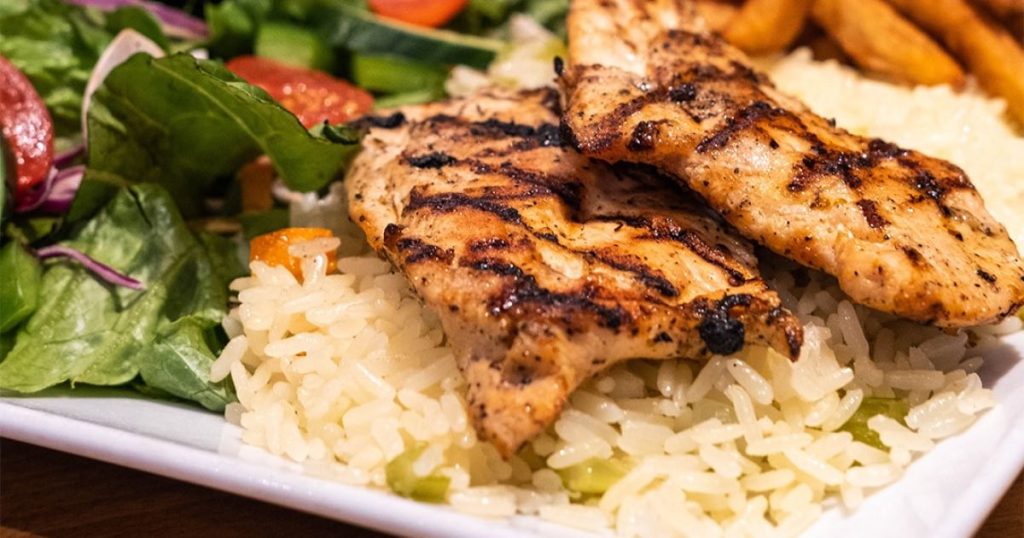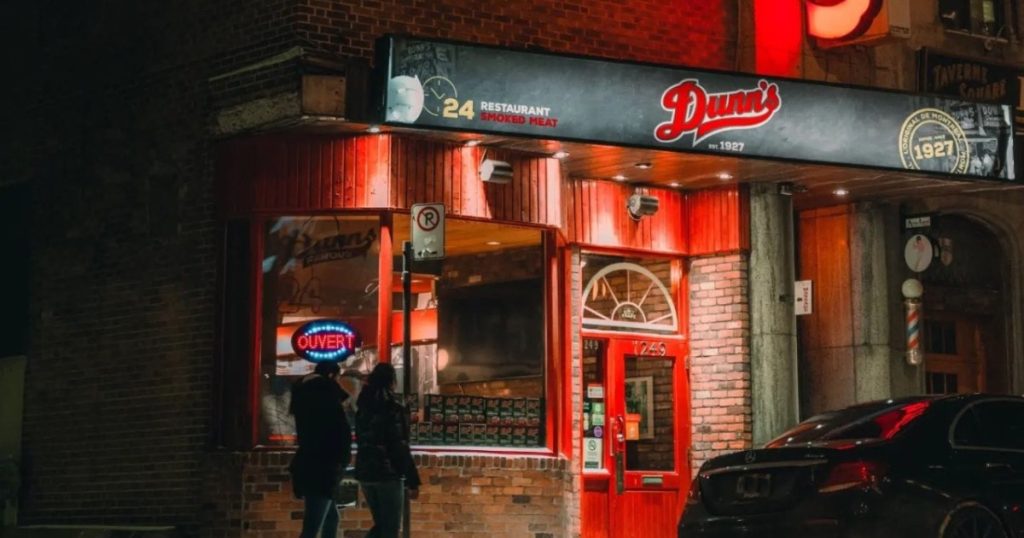You’ve landed in Montreal, and you’re ready for the dish that defines the city: a towering, steaming, ruby-red sandwich of La viande fumée de Montréal.
This is more than just a sandwich; it’s a culinary tradition, a cultural icon, and a deeply personal experience for every local. But to truly enjoy it like a Montrealer, you need to know a few essential rules first.
This guide will walk you through the history, settle the great “Pastrami vs. Smoked Meat” debate, teach you how to order like a pro, and tell you exactly where to find the absolute best version in the city.
A Quick History of Montreal Smoked Meat
The roots of Montreal smoked meat are tied directly to the city’s rich immigrant history. This delicacy was introduced by Jewish immigrants from Eastern Europe, primarily Romania, who settled in Montreal in the late 19th and early 20th centuries.
They brought with them ancient traditions of curing, salting, and smoking beef brisket as a method of preservation. Over time, these traditions evolved, influenced by local ingredients and the climate, into the specific, pepper-forward flavor profile we know today.
The dish quickly became a staple in the city’s early Jewish delis, serving the working-class community and establishing a cultural legacy that has since been embraced by the entire city. It is a symbol of old-world preservation techniques meeting new-world hunger.
It’s Not Pastrami: The Defining Differences You Can Taste
The first question every tourist asks is, “Is this just New York Pastrami?” Absolutely not! While these two deli legends share immigrant roots, their distinct preparation gives them entirely different textures and tastes. If you want to talk like a local, you need to know the defining differences:
The Cut and the Cure
New York pastrami traditionally uses the navel plate, which is often a leaner, denser cut. Montreal Smoked Meat, however, uses the whole beef brisket, meaning the meat you eat incorporates both the leaner flat and the richer, fattier point sections. Furthermore, smoked meat is typically dry-cured (rubbed with spices and left to cure in its own juices), leading to a different moisture content than the wet-cured pastrami.
The Flavor Profile
This is the biggest difference you can taste. Montreal smoked meat uses a bold rub that is fiercely pepper-forward, heavily featuring cracked black pepper, coriander, and garlic. Crucially, the rub contains minimal or no sugar. Pastrami often includes more sweetness and a smokier paprika profile. In Smoked Meat, the pepper spice is front and center.
The Finish: Steam vs. Smoke
After smoking, the meat is subjected to heavy steaming for hours to ensure it reaches its melt-in-your-mouth tenderness. This process yields a fibrous, fall-apart texture that is noticeably softer and more tender than the firmer finish of pastrami.
Ordering Like a Local: How to Choose Your Perfect Cut
When you walk up to the counter, the server will ask you the most important question of your visit. Don’t panic, just know your fat level! Your answer determines your entire eating experience, as the meat is carved to order, steaming hot, straight from the brisket.
The Crucial Question: Lean, Medium, or Fatty?
- Lean: Taken from the lean end of the brisket. This cut is firmer, drier, and allows the pepper spice blend to taste the sharpest.
- Medium (The Recommendation): This is the most popular choice and the best recommendation for first-timers. It’s a balanced mix of lean and fatty slices, offering maximum flavor, tenderness, and juiciness without being overly rich.
- Fatty: Taken from the point cut, this is the richest, most indulgent option. The rendered fat melts into the meat, giving it a soft, almost buttery texture that mellows the spice.
The Serving Standard
To eat it correctly, keep it simple:
- Bread: High-piled on light rye bread.
- Condiment: A thin smear of yellow mustard is mandatory to cut the richness.
The Rule: Do not ask for mayonnaise.
What to Pair With Smoked Meat
The smoked meat sandwich is the star, but the perfect sides complete the Montreal deli ritual.
- The Essential Crunch: A crisp, tart Kosher dill pickle is a non-negotiable side. Its sharp tang cleanses your palate, making every bite of the meat taste fresh.
- The Deli Trio: The classic pairing is often called the smoked meat plate, featuring the sandwich, fresh-cut fries, and creamy coleslaw.
- The Classic Drink: For a touch of nostalgia, pair your sandwich with a cold, sweet black cherry soda. The sugary fizz perfectly counters the meat’s salty spice.
- The Modern Twist: For the adventurous, try the meat piled high on la poutine au smoked meat, marrying two of Quebec’s most famous foods into one unforgettable dish.
Why You Should Go to Dunn’s Famous
There are many delis, but only one is a true 24/7 Montreal legend. At Dunn’s Famous, we don’t just serve smoked meat; we serve a piece of Montreal history.
Depuis 1927, Dunn’s has been a cultural landmark, carrying on the authentic process: brisket is dry-cured, seasoned with our proprietary blend of pepper, coriander, and garlic, hot-smoked, and finally steamed to perfection.
When you sit down at Dunn’s, you’re getting a sandwich that is always hand-sliced to order, steaming hot, and piled as high as tradition demands. Choosing Dunn’s is choosing a guaranteed, authentic, and legendary Montreal experience.
Conclusion
You now have all the insider knowledge needed for your Montreal smoked meat journey. You know the history, you know the difference between our sandwich and pastrami, and you know how to order your perfect cut.
Your final mission: Head to Dunn’s Famous today and boldly order a “Medium Smoked Meat on Rye with mustard and a pickle.” Experience the rich tradition and unforgettable flavor for yourself.
Which cut are you ordering first?
Points Clés
1. Montreal Smoked Meat is cut from the whole beef brisket, making it inherently richer than pastrami’s traditional, leaner navel plate.
2. Smoked meat’s flavor is defined by its boldly pepper-forward rub, emphasizing cracked black pepper and coriander with minimal sugar.
3. After smoking, the meat undergoes hours of heavy steaming, which is crucial for creating its fall-apart tenderness.
4. The final result is a distinct, fibrous, melt-in-your-mouth texture, which is softer and less dense than New York pastrami.
5. The differences in cut, cure, and cooking ensure smoked meat has a flavor identity that is unforgettable and distinct from its New York counterpart.
